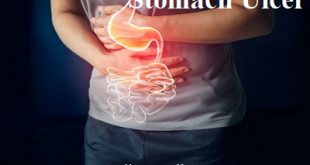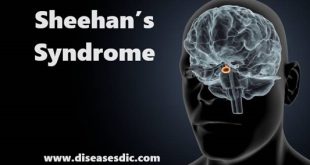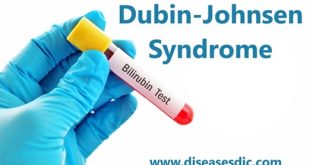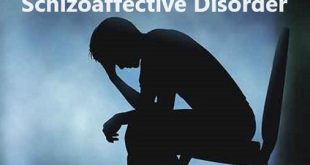What is Sudden Infant Death Syndrome?
Sudden infant death syndrome (SIDS) is the sudden and unexplained death of a baby younger than 1-year-old. A diagnosis of SIDS is made if the baby’s death remains unexplained even after a death scene investigation, an autopsy and a review of the clinical history.
SIDS is part of a larger category of unexpected (as opposed to unexplained) infant deaths called SUDI (sudden unexpected death in infancy). Babies who die suddenly but whose causes of death are later explained (infection, brain abnormality, cardiac dysfunction, etc.) also fall into this SUDI category.
Pathophysiology of SIDS
The significant controversy revolves around the pathophysiology of SIDS. Three common autopsy findings include unclotted blood in the heart, intrathoracic petechiae, and fluid-filled, heavier organs,17 but these findings provide little help in understanding the final pathophysiology of SIDS. The now discredited “apnea theory” of SIDS was proposed in the 1970s and led to decades of research and the creation of an apnea monitoring industry. However, in the index case that first prompted an investigation of the link between apnea and SIDS, the mother later confessed to killing all five of her children.
Current literature supports a triple-risk model, which suggests that SIDS is the final common pathway of three coinciding factors. This model proposes that an infant must first have an underlying vulnerability and then be stressed by an exogenous source, such as prone sleeping placement. Finally, for SIDS to occur, the stress must occur during a critical developmental period, namely in the first year of life. The last two factors in the triple-risk model have been well researched and defined in the medical literature, but the underlying vulnerability remains to be identified.
Current SIDS research topics include investigation of ion channel abnormalities, autonomic nervous system disturbances, and the effects of nicotine on the developing brain. Multiple ion channel disorders that cause QT interval prolongation have been linked to SIDS and may be a factor in 5 to 10 percent of SIDS cases. In addition, defects in normal arousal mechanisms have long been theorized to cause SIDS, and gene mutations affecting the development of the autonomic nervous system appear in as many as 15 percents of SIDS cases. Finally, pre- and postnatal exposure to cigarette smoke has been a known risk factor for SIDS for more than 30 years. Nicotine exposure has been clearly linked with SIDS, as well as with prematurity, autonomic dysfunction, low birth weight, and spontaneous abortions. These associations and newly identified nicotine metabolizing genes have prompted a search for SIDS causality and further highlight the importance of smoking cessation counseling in SIDS prevention efforts. Women should not smoke during pregnancy, and they should keep the infant’s environment smoke-free.
What causes Sudden Infant Death Syndrome?
The exact cause of SIDS is unknown, but it’s thought to be down to a combination of factors.
Experts believe SIDS occurs at a particular stage in a baby’s development and that it affects babies vulnerable to certain environmental stresses.
This vulnerability may be caused by being born prematurely or having a low birthweight, or because of other reasons that have not been identified yet.
Environmental stresses could include tobacco smoke, getting tangled in bedding, a minor illness or a breathing obstruction. There’s also an association between co-sleeping (sleeping with your baby on a bed, sofa or chair) and SIDS.
Babies who die of SIDS are thought to have problems in the way they respond to these stresses and how they regulate their heart rate, breathing, and temperature.
Although the cause of SIDS is not fully understood, there are a number of things you can do to reduce the risk.
Who is at risk for SIDS?
SIDS is a mysterious syndrome since by its very definition the cause cannot be determined. But certain risk factors do exist.
About 2,300 babies in the United States die of SIDS each year. Some babies are more at risk than others. For example, SIDS is more likely to affect a baby who is between 1 and 4 months old, it is more common in boys than girls, and most deaths occur during the fall, winter and early spring months.
Factors that may place a baby at higher risk of dying from SIDS include the following:
- Babies who sleep on their stomach or their side rather than their back
- Overheating while sleeping
- Too soft a sleeping surface, with fluffy blankets or toys
- Mothers who smoke during pregnancy (three times more likely to have a baby with SIDS)
- Exposure to passive smoke from smoking by mothers, fathers, and others in the household (doubles a baby’s risk of SIDS)
- Mothers who are younger than 20 years old at the time of their first pregnancy
- Babies born to mothers who had little, late or no prenatal care
- Premature or low birth weight babies
- Having a sibling who died of SIDS
Symptoms of Sudden Infant Death Syndrome
SIDS doesn’t have any noticeable symptoms. It happens suddenly and unexpectedly to infants who seem to be healthy.
Exams and Tests for Sudden Infant Death Syndrome
SIDS is a diagnosis of exclusion, meaning that other causes of death must be ruled out. The cause of an infant’s death can be determined only through a process of collecting information and conducting sometimes-complex forensic tests and procedures. All other recognizable causes of death are investigated prior to making the diagnosis of SIDS.
Four major avenues of investigation aid in the determination of a SIDS death: postmortem lab tests, autopsy, death-scene investigation, and the review of victim and family case history.
Postmortem laboratory tests are done to rule out other causes of death (for example, electrolytes are checked to rule out dehydration and electrolyte imbalance; cultures are obtained to evaluate whether an infection was present). In SIDS, these laboratory tests are generally not revealing.
An autopsy provides clues as to the cause of death. In some sudden, unexpected infant deaths, specific abnormalities of the brain or central nervous system, the heart or lungs, or infection may be identified as the cause of death. The autopsy findings in SIDS victims are typically subtle and yield only supportive, rather than conclusive, findings to explain SIDS.
A thorough investigation of the death scene consists of interviewing the parents, other caregivers, and family members, collecting items from the death scene and evaluating that information. A detailed scene investigation may reveal a recognizable and possibly preventable cause of death.
A parent or caregiver may be asked these questions:
- Where was the baby discovered?
- What position was the baby in?
- When the baby was last checked? Last fed?
- How was the baby sleeping?
- Where there any recent signs of illness?
- Was the infant taking any medication, either prescription or over the counter?
You should let your doctor know about any family or infant medical history. It is important to note that family history would include any previous history of unexplained infant death, sudden cardiac death, or metabolic or genetic disorders, for example.
How is SIDS treated?
There is no specific treatment for SIDS.
Getting support
Losing a baby for any reason can be devastating. However, losing a baby to SIDS can have additional emotional ramifications beyond those of grief and guilt. There will also be a mandatory investigation and autopsy to try to find the cause of your baby’s death, which can add to the emotional toll.
In addition, the loss of a child can strain the relationship between spouses as well as have an emotional impact on any other children in the family.
For these reasons, getting support is critical. There are several support groups for those who have lost a child where you can find others who understand how you’re feeling. Counseling may also be helpful for both the grieving process as well as for your relationship with your spouse.
Prevention of Sudden Infant Death Syndrome
There’s no guaranteed way to prevent SIDS, but you can help your baby sleep more safely by following these tips:
- Back to sleep. Place your baby to sleep resting on his or her back, rather than on the stomach or side. This isn’t necessary when your baby’s awake or able to roll over both ways without help.
- Don’t assume that others will place your baby to sleep in the correct position — insist on it. Advise sitters and child care personnel not to use the stomach position to calm an upset baby.
- Keep the crib as bare as possible. Use a firm mattress and avoid placing your baby on thick, fluffy padding, such as lambskin or a thick quilt. Don’t leave pillows, fluffy toys or stuffed animals in the crib. These may interfere with breathing if your baby’s face presses against them.
- Don’t overheat baby. To keep your baby warm, try a sleep sack or other sleep clothing that doesn’t require additional covers. If you use a blanket, make it lightweight.
- Tuck the blanket securely into the foot of the mattress, with just enough length to cover your baby’s shoulders. Then place your baby in the crib, near the foot, covered loosely with the blanket. Don’t cover your baby’s head.
- Baby should sleep alone. Your baby’s sleeping in the same room with you is a great idea, but adult beds aren’t safe for infants. A baby can become trapped and suffocate between the headboard slats, the space between the mattress and the bed frame, or the space between the mattress and the wall.
- A baby can also suffocate if a sleeping parent accidentally rolls over and covers the baby’s nose and mouth.
- Breast-feed your baby, if possible. Breastfeeding for at least six months lowers the risk of SIDS.
- Avoid baby monitors and other commercial devices that claim to reduce the risk of SIDS. The American Academy of Pediatrics discourages the use of monitors and other devices because of ineffectiveness and safety issues.
- Offer a pacifier. Sucking on a pacifier at naptime and bedtime may reduce the risk of SIDS. One caveat – if you’re breastfeeding, wait to offer a pacifier until your baby is 3 to 4 weeks old and you’ve settled into an effective nursing routine.
- If your baby’s not interested in the pacifier, don’t force it. Try again another day. If the pacifier falls out of your baby’s mouth while he or she is sleeping, don’t pop it back in.
Outlook and takeaway
SIDS doesn’t have a cause and can’t always be prevented. However, taking appropriate actions can help reduce your baby’s risks.
Seeing your doctor during pregnancy as well as your baby’s doctor after giving birth for all routine checkups is also important.
If you have lost a child to SIDS, it’s important to get support. You’ll need to work through your grief, and this will be easier to do with the help of others who understand.
Remember, grief takes time and is different for everyone. The best thing you can do is be open with your loved ones and those in your support group about how you’re feeling as you work through your devastating loss.
 Diseases Treatments Dictionary This is complete solution to read all diseases treatments Which covers Prevention, Causes, Symptoms, Medical Terms, Drugs, Prescription, Natural Remedies with cures and Treatments. Most of the common diseases were listed in names, split with categories.
Diseases Treatments Dictionary This is complete solution to read all diseases treatments Which covers Prevention, Causes, Symptoms, Medical Terms, Drugs, Prescription, Natural Remedies with cures and Treatments. Most of the common diseases were listed in names, split with categories.








All are true & I hope each and every person who reads it carefully gains something,very nice I agree fully
SIDS is caused by high level of Hcy _ Homocysteine. This is 100% true. This was discovered already in 1960′. Hcy – level must be 6.4 micro mol/L. Hcy causes cancer, diabetes melitus, and more than 80 deadly diseases that they say are not curable. All you need are large dose of vit. B6 50mg/day, B9 10mg/day, B12 1mg/day. It takes about 2 years to get Hcy level to 6.4
what is the cause of still birth ?
what causes babies to died in the stomach?
cause of stillbirth are as follows:
Pregnancy and labor complications
Problems with the placenta
Birth defects
Infection
Problems with the umbilical cord
High blood pressure disorders
Medical complications in the mother